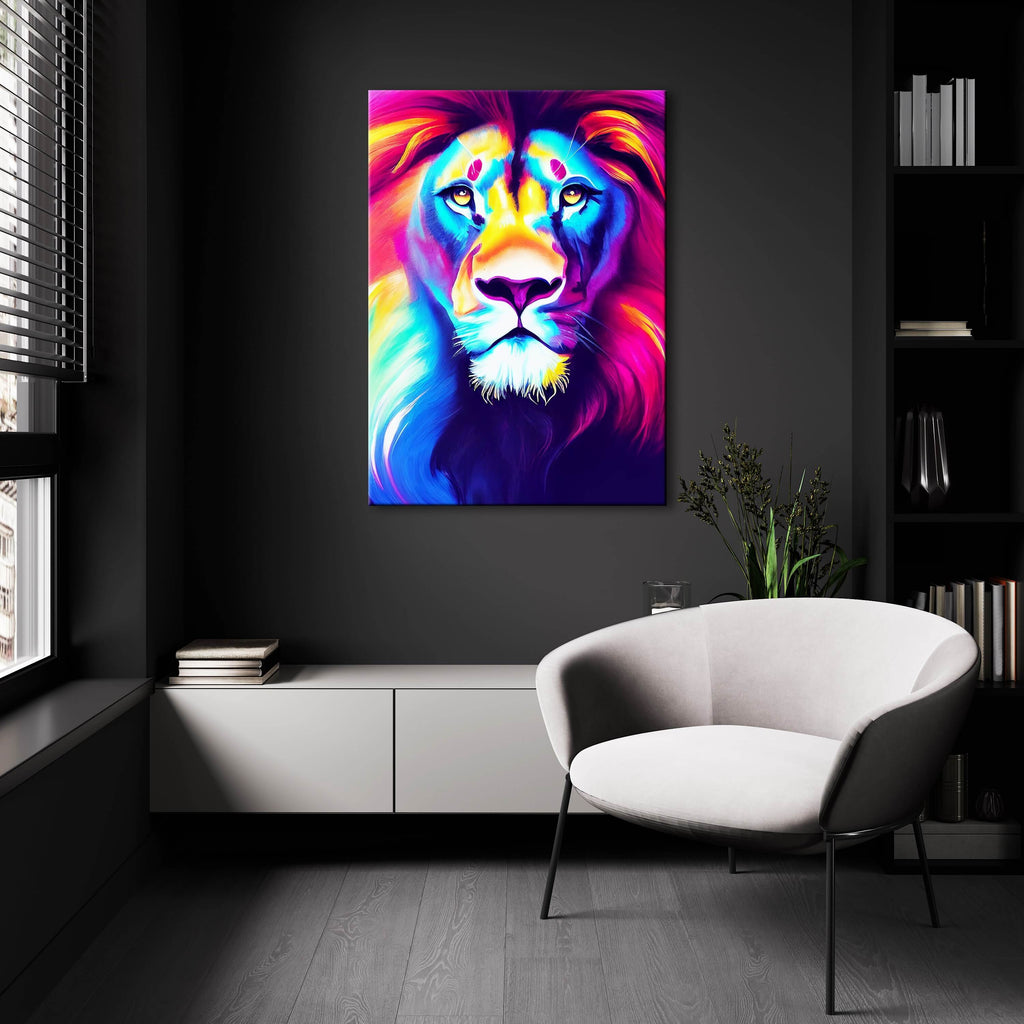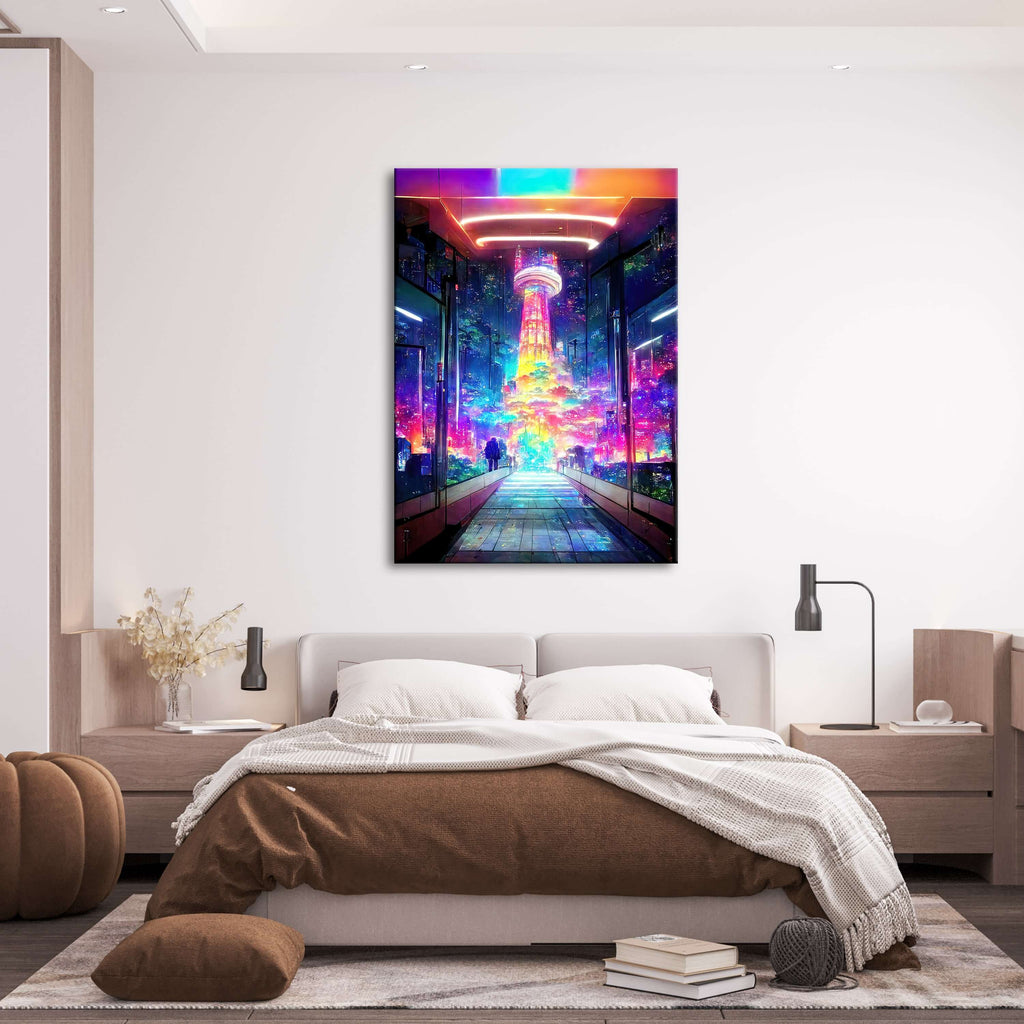How to Create Trippy Art: A Journey Through Psychedelic Creativity
Mar 06, 2024
Introduction
Imagine diving into a world where colors dance and reality bends – welcome to the realm of trippy art. This unique art form, characterized by its vibrant colors, surreal landscapes, and mind-bending patterns, offers more than just visual stimulation; it's a gateway to a deeper, more psychedelic understanding of art. Originating from the swirling, rebellious energy of the 1960s, trippy art has evolved, finding new expressions in the digital age. In this article, we'll explore the fascinating world of psychedelic creativity, from its rich history to practical tips on creating your own trippy masterpieces. For those seeking visual inspiration, the MusaArtGallery offers an eclectic collection of trippy artwork that exemplifies this style's captivating essence. So, let's embark on this colorful journey and unlock the secrets of creating mesmerizing trippy art.
The History of Trippy Art
Trippy art, often synonymous with psychedelic art, traces its origins back to the early 1960s, a time of social upheaval and cultural revolution. The term 'psychedelic' itself, coined by psychiatrist Humphry Osmond, means "mind-manifesting," aptly capturing the essence of this art form. It emerged as a visual counterpart to the psychedelic music and countercultural movements sweeping across the globe.
This period witnessed the rise of iconic figures like the Grateful Dead and Pink Floyd, whose music became intertwined with the visual explosion of colors and patterns that defined trippy art. Artists like Peter Max and Victor Moscoso pushed boundaries with their vivid, often surreal imagery, inspired by the free-spirited ethos of the era. These works weren't just decorative; they were gateways to deeper consciousness and reflections of a generation's quest for meaning and freedom.
As we moved into the 70s and beyond, trippy art didn't fade away; instead, it evolved. It found new life in the digital realm, with artists experimenting with software and 3D modeling to create visuals that were impossible in the physical world. Today, trippy art continues to be a dynamic and evolving form, absorbing influences and utilizing technologies that previous generations could only dream of.
Understanding the Psychedelic Aesthetic
Trippy art is not just about vibrant colors and swirling patterns; it's an exploration into the depths of perception and consciousness. The psychedelic aesthetic is heavily characterized by an intense kaleidoscope of colors, often clashing or blending in unexpected ways to create a sense of movement and depth. This art form frequently features morphing shapes and symmetrical patterns that play tricks on the eye, inviting viewers to question their perception of reality.
Central to this aesthetic is the concept of synesthesia - a blending of the senses. Just as a psychedelic experience might involve 'seeing' sounds or 'hearing' colors, trippy art often seeks to evoke a multi-sensory experience in the viewer. It's not uncommon for this art to be experienced alongside music, creating a holistic sensory environment that is immersive and transcendental.
Furthermore, trippy art often draws on themes of nature, spirituality, and cosmic imagery. It might depict surreal landscapes that defy the laws of physics, or intricate mandalas that symbolize the universe's interconnectedness. The goal is often to evoke a sense of awe and wonder, to transport the viewer to a space that transcends the ordinary.
Finding Inspiration
Inspiration for trippy art can come from anywhere - the natural world, dreams, spiritual experiences, or even your daily surroundings. Many artists draw inspiration from their own psychedelic experiences, translating the ineffable aspects of these journeys into visual form. However, you don't need to have a psychedelic experience to create trippy art. Inspiration can also be found in the works of other artists, music, or the exploration of your inner psyche.
Visiting galleries, both physical and online, like Musa Art Gallery, can spark ideas. These spaces often showcase a range of trippy artworks, providing a wealth of visual material to stimulate your creativity. Additionally, engaging with the community of psychedelic artists and enthusiasts can offer new perspectives and ideas.
Keeping an open mind and a curious spirit is key. Trippy art is about exploration and experimentation. Whether you're wandering through nature, listening to a piece of music, or diving into the works of other artists, always be ready to capture the sparks of inspiration that come your way.
Tools and Materials
The creation of trippy art can be approached through various mediums, each offering its unique texture and possibilities. Traditional artists might gravitate towards canvases, using acrylics or oils to layer vivid colors and create depth. Paints allow for a tactile and hands-on approach, ideal for spontaneous expression and organic forms. Brushes, sponges, and even fingers become tools to blend, dab, and smear, creating ethereal and dreamlike scenes.
For those inclined towards digital mediums, the choices are equally rich. Software like Adobe Photoshop, Illustrator, and digital painting programs like Procreate or Corel Painter open up limitless possibilities. With these, an artist can experiment with colors, shapes, and textures that might be challenging to replicate with physical paints. Digital tools also offer the advantage of undoing changes, making it easier to experiment without fear of making irreversible mistakes.
Hybrid approaches can also be fascinating in trippy art. Artists might start with a traditional sketch or painting, then digitize their work to further enhance and manipulate the image. This blending of old and new techniques is a testament to the evolving nature of psychedelic art.
Creating Your First Piece of Trippy Art
Embarking on your first trippy art project can be both exciting and daunting. Start by setting a comfortable workspace, whether it's a physical canvas in your studio or a digital tablet. Begin with an idea or concept in mind, but be open to the flow of creativity – sometimes the most striking images come from spontaneous bursts of inspiration.
Sketch out your ideas loosely. In trippy art, symmetry and patterns are often key elements, so consider incorporating these into your design. However, don’t be afraid to break the rules and let your artwork evolve organically. Play with colors boldly; in psychedelic art, more is often more. Vibrant, contrasting colors can create a dynamic, eye-catching effect.
As you work, step back from your piece periodically. This allows you to view the work as a whole and see how different elements interact. Remember, the goal is to create an immersive experience for the viewer, one that captivates and enchants.
Throughout the process, remain patient and open-minded. Creating art is a journey, and like any good trip, it’s about the experience as much as the destination.
Conclusion:
In the vibrant universe of trippy art, we find a dynamic fusion of imagination, color, and boundless creativity. As we've journeyed through the history, techniques, and inspirations behind psychedelic art, it's clear that this genre is more than just an aesthetic; it's a portal to new perspectives and heightened consciousness. Whether you're a budding artist inspired by the works showcased at Musa Art Gallery or a seasoned creator looking to explore new realms, trippy art offers a canvas where the only limit is your imagination. Embrace the journey of creating art that transcends the ordinary, and let your creative spirit soar into the kaleidoscopic skies of psychedelic artistry.











